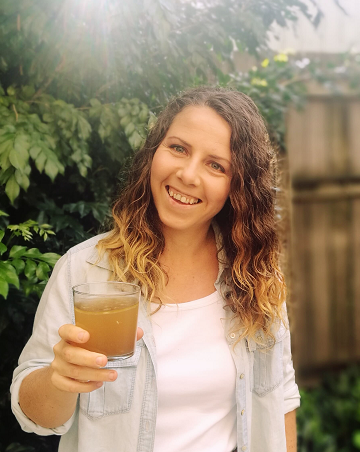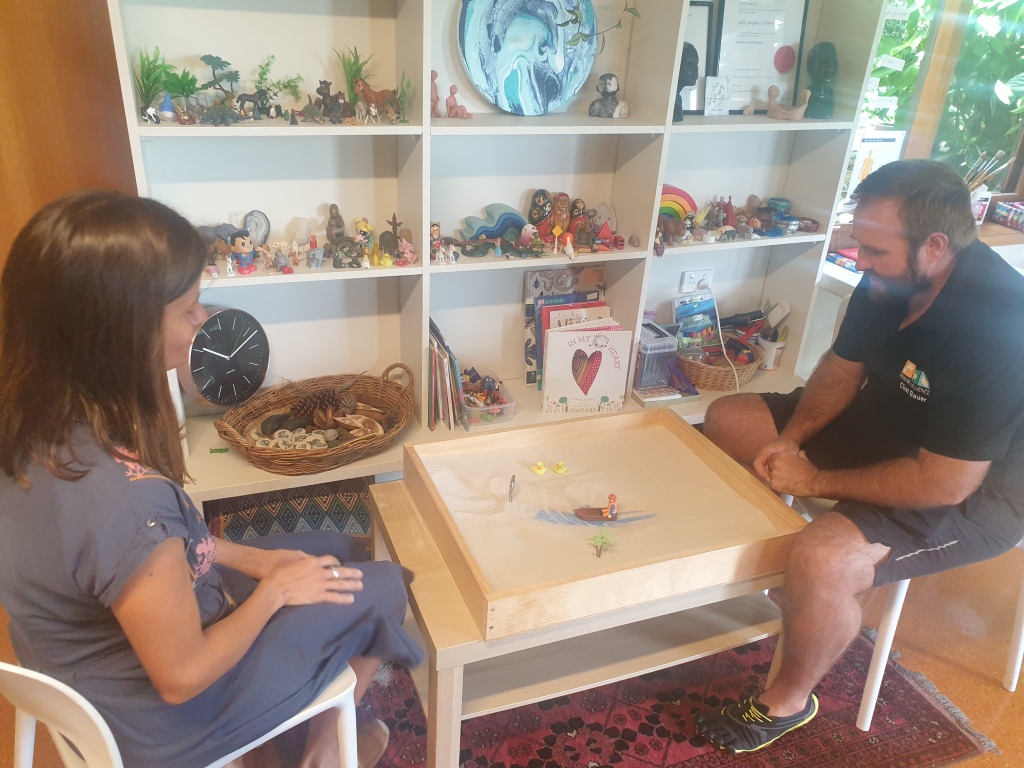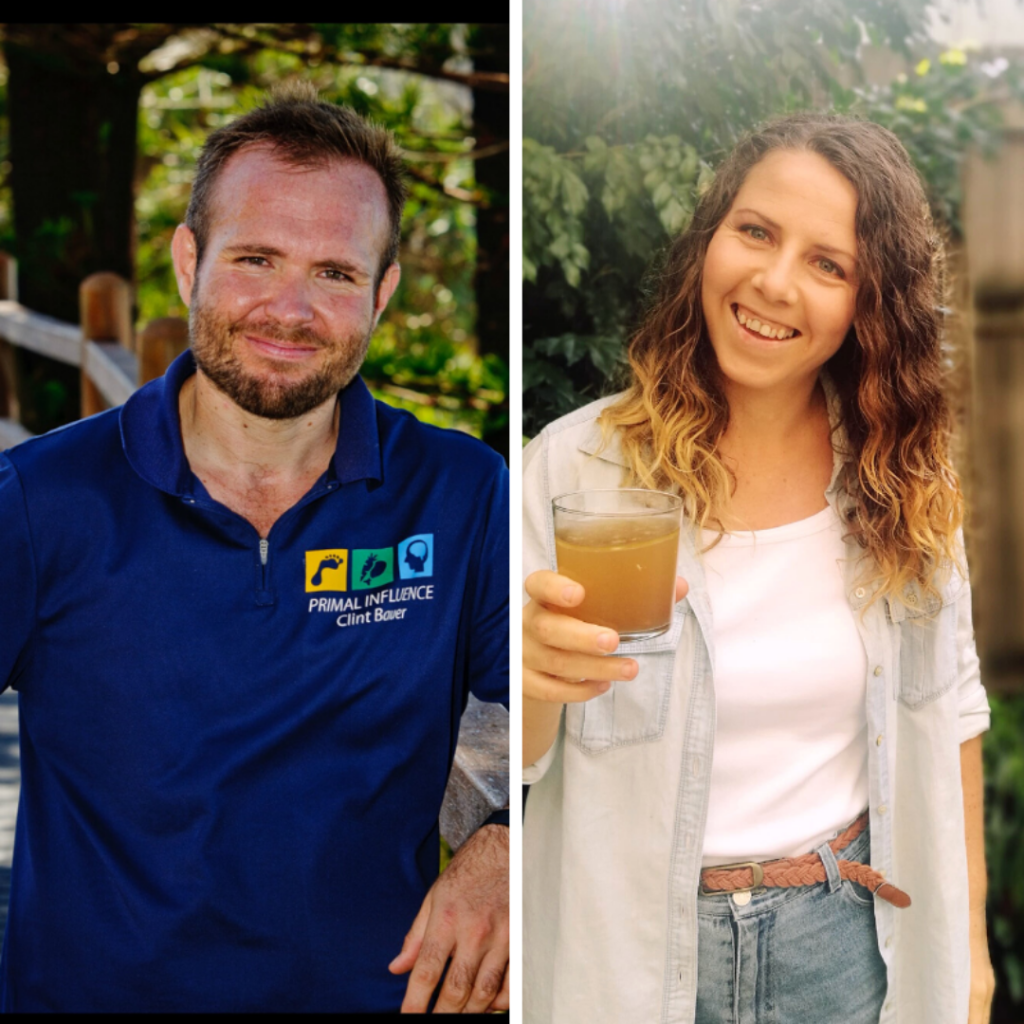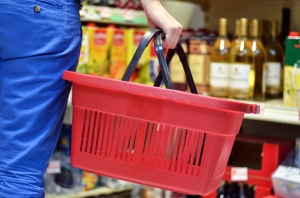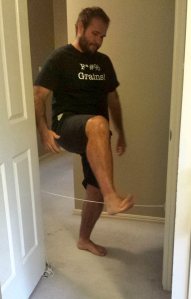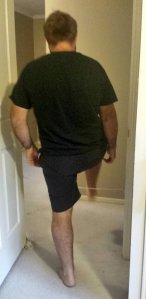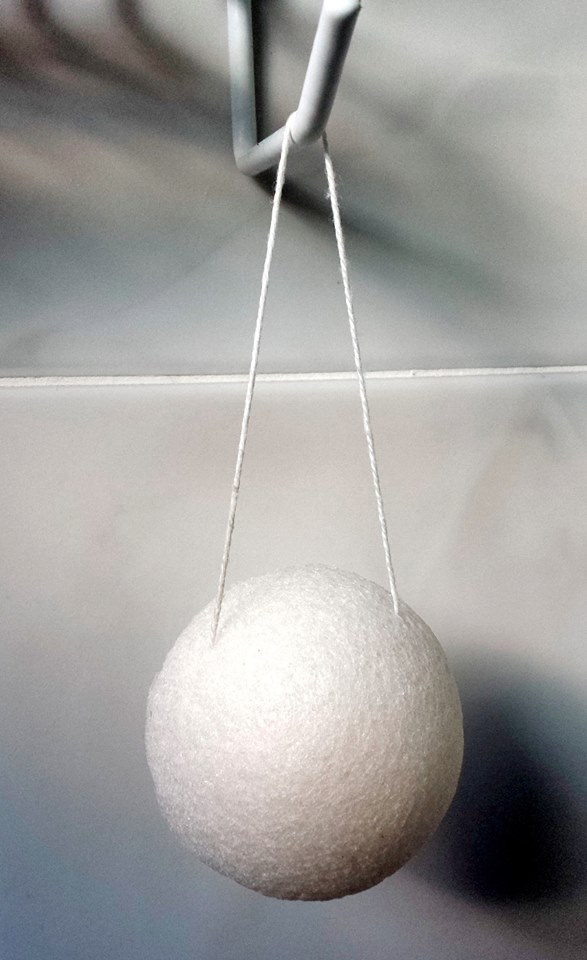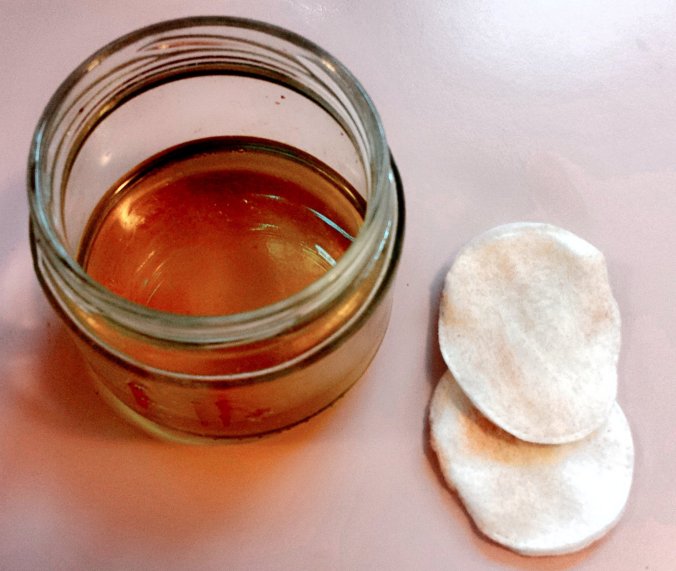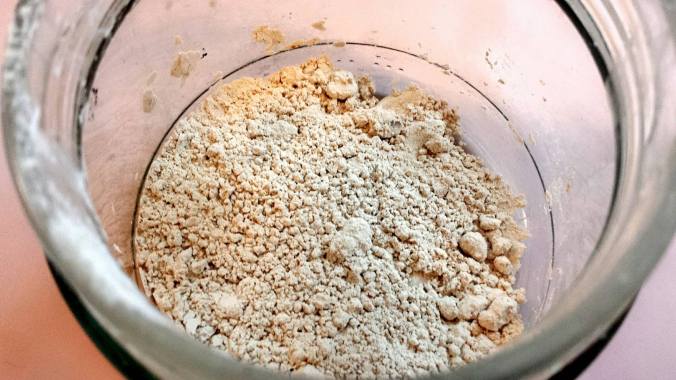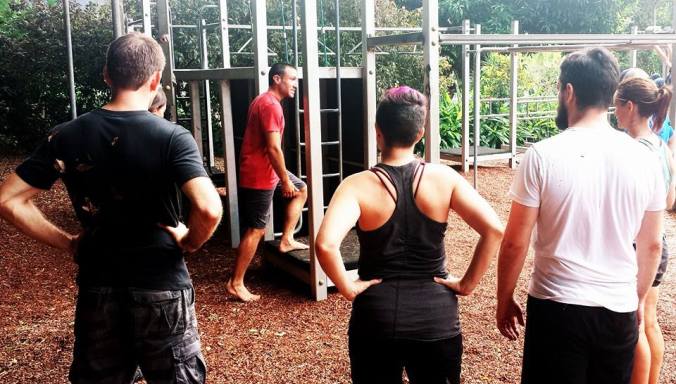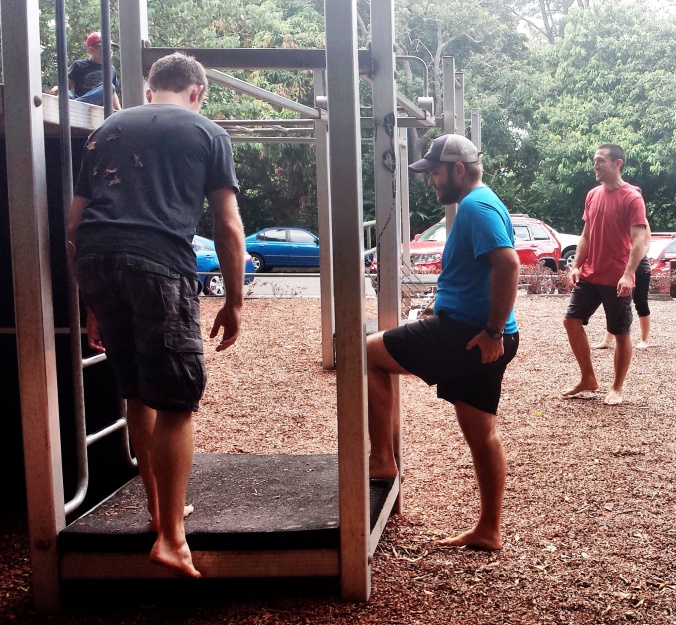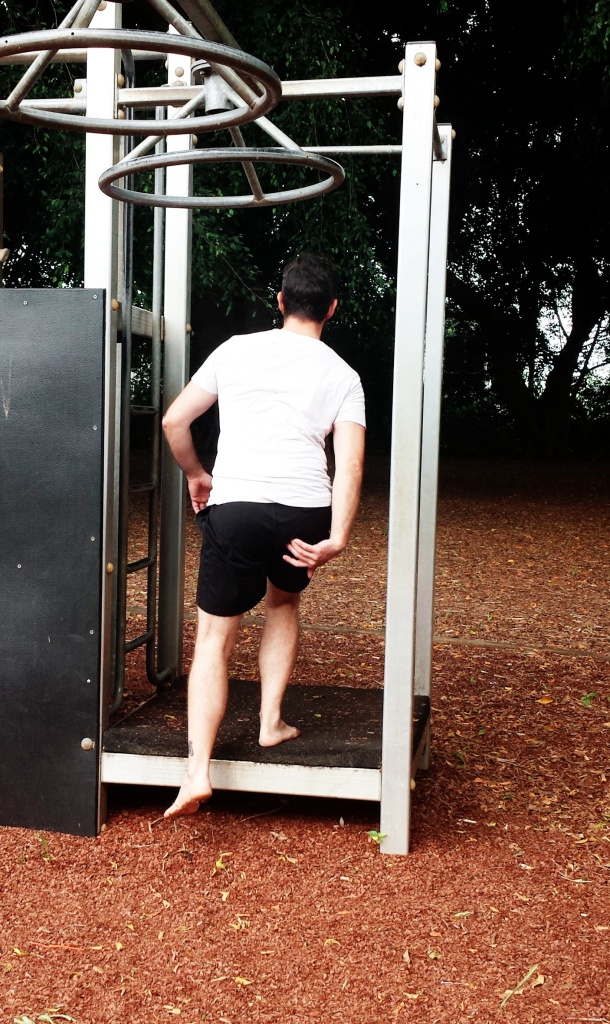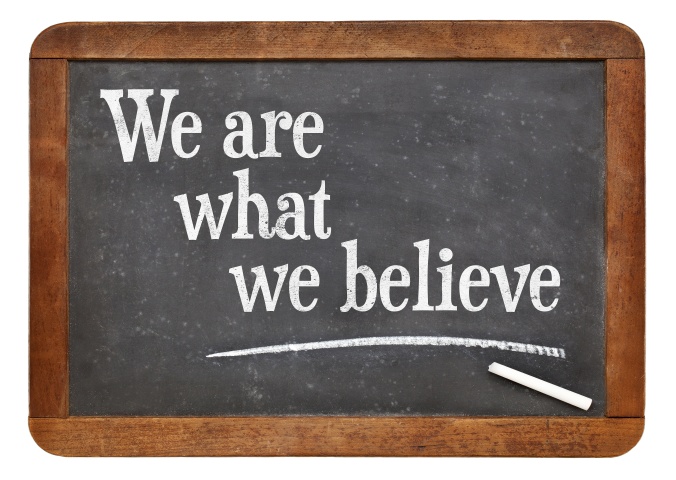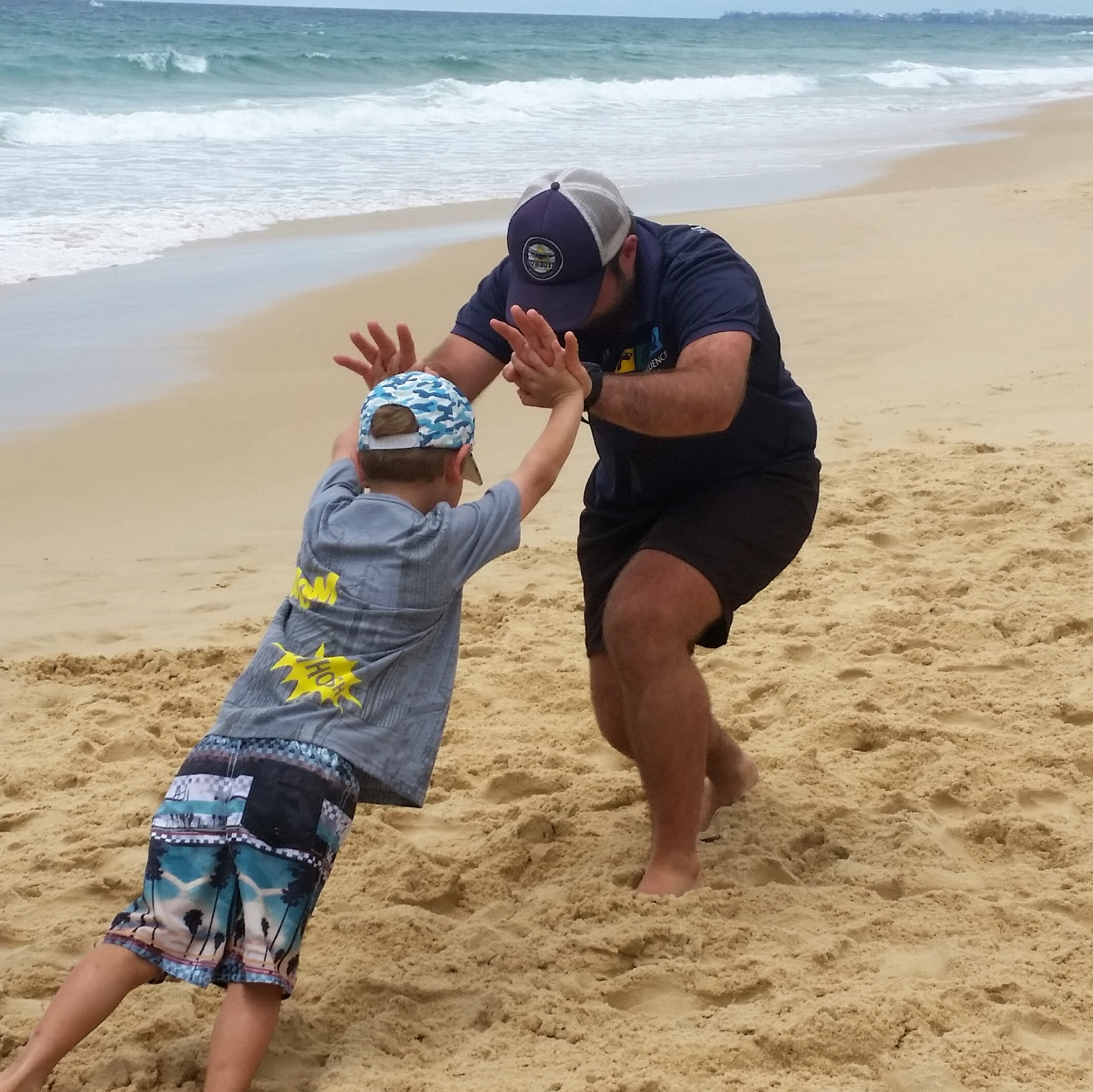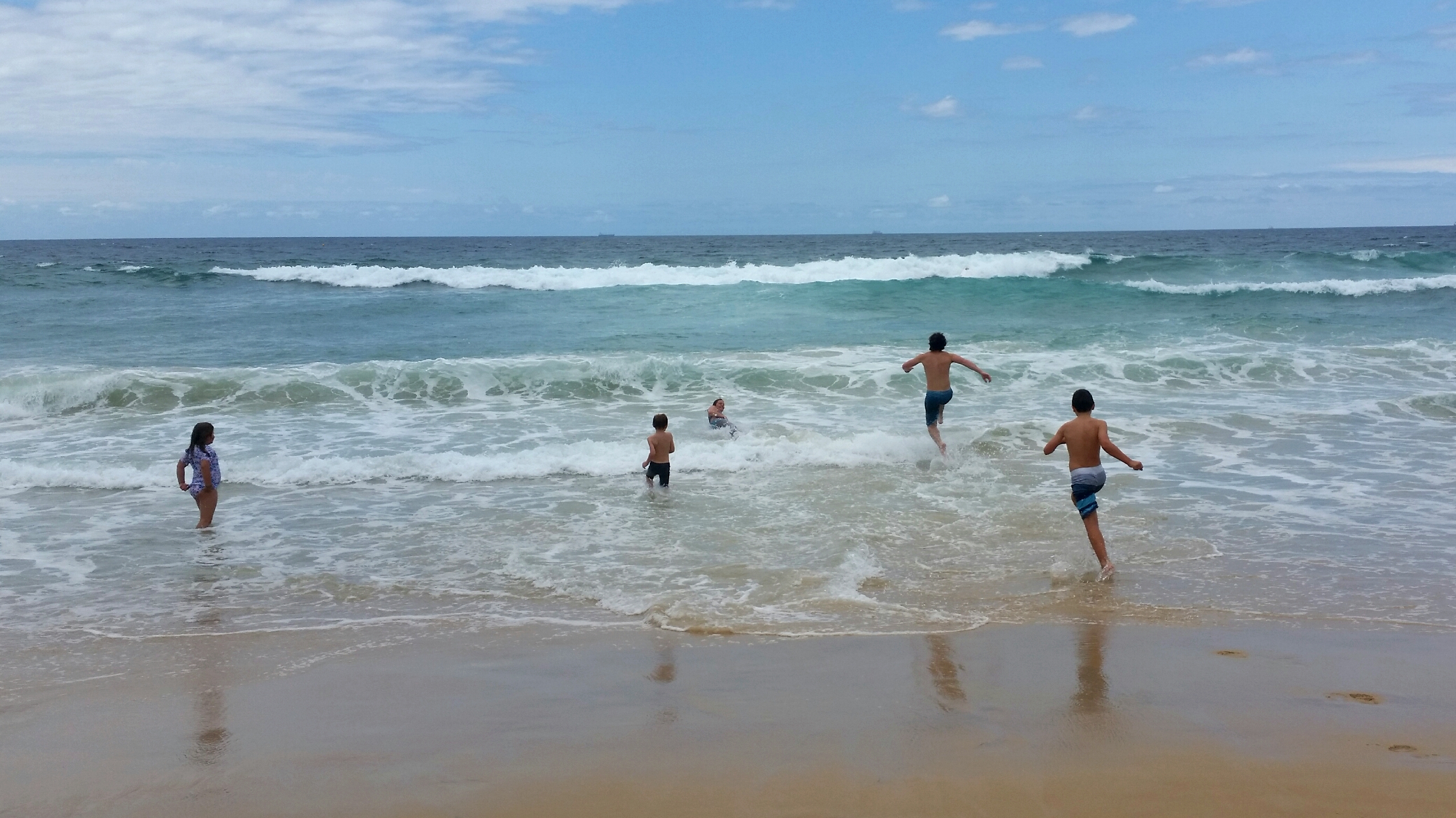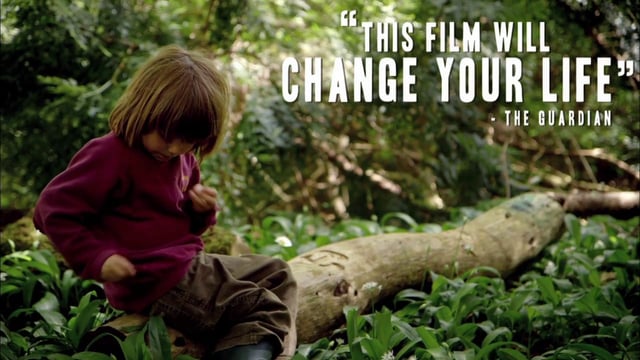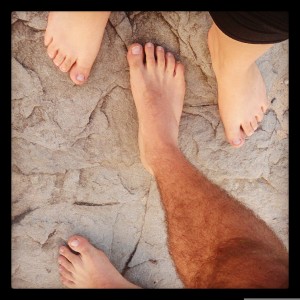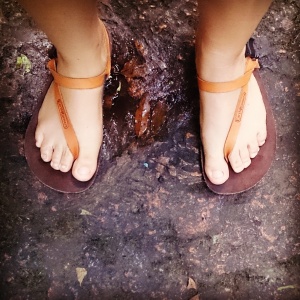Quite a unique topic because it’s a little outside of the usual zone of health and wellness we focus on, but just as important as any of the usual modern paleo lifestyle content.
We’re as modern and ‘normal’ as the next couple in so many ways… we love to get our dance on at live music gigs, going to the movies, chilling out to Netflix, wearing regular clothing, getting dressed up to go to something fancy, we live in a built-up urban area, we drive a nice 4×4, we have ‘normal’ hobbies, we even own an Xbox!
But we also like to incorporate primitive living elements our ancestors used into our modern lives because it connects us to our roots are humans and provides a type of satisfation and inner confidence not comparible to anything else.
From as primal as possible, to more modern versions, we love dabbling in primitive and ancestral skills ourselves, and teaching them to others when we can.
In this post we’ll talk about some of our favourite skills and activities, their emotional and physical benefits, how to take them up no matter where you live, for kids AND adults alike. The benefits and positive changes we’ve seen in those we’ve shown this stuff to, and with others who practice these skills have been quite amazing. So we hope you feel inspired to try some of these yourself!

Basket Weaving 🗑️
Let’s kick this blog off with a great intro activity… making coil weave baskets with natural materials.

There are loads of types of traditional basket weaving and making techniques, from different parts of the world, but back in the day when the first humans had to come up with a way to make food and other items transportable and for storage they would have used whatever was available to them in whatever way was most practical and functional. Different cultures have different methods and rituals of course but at the end of the day there are no real rules when it comes to this type of activity. Creativity and ingenuity are encouraged!
The method of coil weave is very basic and one that took me a few goes to get right and I used different materials in different ways, I wasn’t taught but I found out the general basics online before starting. I knew a local beach spinifex grass was an option as the material, as well as lomandra which is a really common and useful native plant. The only only non-natural part of my baskets has been the yarn needle used but one of my to-do-eventually projects is to make a needle from bone so it’s all totally natural!

Basket weaving can be a mindful, calming, relaxing, frustrating, annoying, fun, painful and enjoyable activity. As with most traditional activities all kinds of things can go wrong, there’s almost always physical and mental challenges involved, and the intention you have before starting and while doing it can change how you feel about the experience and the outcome.
It’s sometimes nice to do alone, or with others, like any craft really. Kids, adults, anyone can give it a go and benefit. It can be quite tough on the fingers as well as time-consuming so it’s helpful for building resilience and patience – attributes sadly becoming less common these days.



If you’d me to make a video on how I create simple natural coil weave basket, let me know!
Alternatively there are heaps of tutorials online and in books.
Star Gazing 🌟

“We’ve been fixated on the starry sky since our inception. We have stared at the cosmos as humans, as Neanderthals, as base simians, and, no doubt, as the scrabblers who came before the primate. There are recordings in chalk, cuneiform, tablet, scroll, paint and stonework from every era of man, in every corner of the world, dedicated to the mapping of heavens we knew we would never touch. Mapping the stars was a method of early compassing, aiding travellers and sailors with their recognizable constellations. If you knew the stars, a clear night could always guide you home. But these reasons for stargazing have staled with the advent of modern solutions. We have GPS now, and the pagan beliefs which spawned the first gods and heroes who populated the cosmos have been consigned to history books, labelled as mythology rather than religion. So, why stargaze in our modern age?
Beyond the fact that the stars are beautiful to see, same as any fine art, the main reason may be that it helps and heals us on a mental level.
Piff (a psychologist) defines awe as a crucial social function; a requirement for shifting our focus from individual, self-focused concerns and expanding our perspective to include others’ well-being. What’s felt when experiencing the grandeur of nature–be it Earth’s or the stars’–is a catalyst for inspiring goodwill and broader social-thinking in us. Looking on the galaxy, we recognize that we are one small piece of an enormous whole, and we become more likely to act on our ability to help others within our own small world.” – Optics Max
We absolutely agree with that take on why star gazing is so important. Not only that but it’s calming, relaxing, interesting, and a sky full of twinkling stars is just so beautiful.

🔭 There are apps you can download to help you and your kids learn about what you can see above you at night time, some astronomy groups hold public get-together and education sessions, and of course, just going out to a dark area to see a sky full of stars at night is just a nice thing to do. There are plenty of ways to learn about the night skies above or just to enjoy them.
Are you already into star gazing or is it something you’d like to start getting into?
Using Sticks to Make Fire 🔥
+ why everyone should try it at least once!

Whenever we demo this primitive skill to others they get really impressed and say “I couldn’t do that” because it seems so hard to do. The reality it is.. it can be hard but doesn’t have to be. If you’re lost in the bush and are unfamiliar with the natural materials around, there’s nothing artificial or modern to use to make fire and you’re experimenting with what you find then yeah, that’d be hard. But if you have access to materials that you know can work and you’ve practiced the method then it’s really not hard to do.
Once the materials are ready it can take just 10 seconds to make fire!
It’s more complicated than just picking two random sticks and rubbing them together quickly, there are a few other key elements. And when you understand the process and actually manage to get am ember then a flame, it’s honestly one of the most satisfying human experiences.
There are quite a few different friction fire methods, we’ve tried two popular ones: Hand Drill and Bow Drill (modified version). Hand Drill is one of the hardest and the first type Clint attempted and achieved. It was a huge and exhilarating achievement! We actually partnered up and got fire together one night, he did most of the work but I helped, something we’ll never forget!
Since then we’ve taught our nephew and his best mate (AKA The Jacobs) the steps to take to learn fire making using a flint and steel with natural materials up to a modified bow drill method they achieved on the weekend with help from Clint. It’s physically challenging and tiring, so when it’s successful it’s such a huge reward and the boys were over the moon when they eventually got it.
Clint and I have achieved it with this method first go together which I’m super proud of and it’s re ignited (pardon the pun!!) my passion for this stuff, it’s now more of a priority to fit these projects and activities into my super busy modern life. Why? Because it makes me feel good. It brings me closer to my roots as a human being. It makes me a more capable human. It gives me confidence and inner strength. Learning and doing well with skills our ancient ancestors used for not only survival but, in many cases, to thrive, brings a connectedness and deep satisfaction I can’t compare to anything else.


Not only is learning fire making extremely practical and functional should you find yourself in a situation where it’s crucial and can save your life, it’s also just incredibly rewarding, interesting and enjoyable in general.
Stay tuned for our next newsletter when we include info on HOW to get started, even how to get the kids into it safely and other important benefits it can have for them.
Check out a previous blog 5 𝙏𝙝𝙞𝙣𝙜𝙨 𝙄’𝙫𝙚 𝙇𝙚𝙖𝙧𝙣𝙚𝙙 𝙛𝙧𝙤𝙢 𝙍𝙪𝙗𝙗𝙞𝙣𝙜 𝙏𝙬𝙤 𝙎𝙩𝙞𝙘𝙠𝙨 𝙏𝙤𝙜𝙚𝙩𝙝𝙚𝙧 – 𝙗𝙮 𝘾𝙡𝙞𝙣𝙩
Foraging for Wild Foods 🌿

Many of you will already know this is one of my fave things to do! I love foraging! I got into it quite a few years ago, when, like with all the primitive/ancestral/traditional skills we dabble in, came from an interest in expanding our knowledge and experience within this sphere of health and well-being, further to just how our ancestors ate (i.e. ‘Paleo’). Eating paleo is just one element, our ancestors did a lot more than just eat! But eating is a big one, and since supermarkets and even farms and markets weren’t around for an extremely long time (until the Agricultural Revolution) humans had to hunt and gather their own food.
Now, I believe hunting for animals is far more beneficial than foraging for plant foods, as animals did give us, and still do give us, the most nutritional benefit and energy to sustain life, but plants were a supplement and also used medicinally.

It’s interesting because from what we’ve learned about humans in history, in primitive times generally men were the hunters and builders while women were the gatherers, cooks and creators. Not always of course but generally speaking, because often everyone had to be capable at every task, but in most cases men and women had different roles. Clint and I feel very connected to those roles and interests respectively today, just naturally. He’s naturally more connected to tracking, hunting etc while I can’t help but look for edible plants around me!
Once I learnt to forage for wild foods I couldn’t ‘un learn’. I’ve never lost interest. I go through periods where I’m not overly active in foraging but I’m always noticing what natural foods are available wherever I am. Native and introduced, I’m fascinated by it all and I love nibbling on a few berries or fruits while I’m out and about, or taking a few home with me to cook and use in interesting ways. Or to turn into healing balms and poultices. It’s a very handy and rewarding skill to have that definitely enriches my life. I’ve been lucky to teach this skill to many groups of people of all ages and have even inspired our niece and nephews to enjoy foraged food when they’re with us which I love.

Disclaimer: I never ever ever consume a wild food without being 100% certain of identity and edibility. And I’m always extremely conscious and protective of the eco systems.
Hunting 🏹
Or simply learning about + using the tools!

Another eventual transition for us within the Paleo Lifestyle sphere was hunting. The idea of being able to source food to eat, from absolute scratch, with an incredibly basic weapon… well it doesn’t get much more ‘human’ and natural than that! Clint, more so than me, grew a very keen interest for primitive hunting, in particular using traditional bows and spears. He was gifted a beautiful recurve bow and taught himself to shoot arrows still and moving targets (in our garage and driveway believe it or not!!). He managed to hunt a hare on a solo camping/hunting trip to the country after learning safe, ethical and smart hunting methods and a lot of practice. It was an emotional and meaningful experience for him and one I hope to experience myself some day as I want to become a trad hunter like him. We’d practice way more often if we could but we just don’t get the time needed, or the space, to become really good at it or to provide lots of food and useful materials.
He used almost every bit of that hare and it fed us so well for many meals. Meals we’ll cherish the memory of no doubt forever.


Besides using bows for hunting we enjoy simply using them for target practice. Clint even made a bow (for me!) and just that whole process was an amazingly fulfilling and interesting experience for him. Making and practicing using a ‘weapon’ is not the same as hunting, can have huge benefits physically and emotionally and hunting doesn’t have to be about actually killing an animal for food, it can be about every part of the process up until that point.

Ever watched a child build a hunting tool and pretend to go for prey?
It’s a natural and instinctual practice.
Other than traditional-style bows, Clint also dabbles in spear making and loves to teach kids how to make and use spears. Throwing is a natural human movement and skill (because we once had to throw as part of surviving) and shouldn’t be limited to balls and frisbees. Making and throwing a spear well for physical fitness can be more challenging, more rewarding and more enjoyable.

With spear making comes whittling and knife skills, understanding and appreciating natural materials used, learning safety, patience and gaining confidence. Honestly, the joy these kinds of practices and skills have brought us is indescribable. We hope this inspires you to start looking into traditional hunting practices and methods in a modern way, even if not for the end purpose of actually hunting.

Clint’s tips on how to get started making hunting tools:
Spear making:
- Start with a basic whittling knife (there are rounded blade end versions for kids) and use green, light and soft timbers for practicing, either fallen, cut or bought. Bamboo makes a great fishing spear and Macaranga (native to Australia) makes great atlatls and throwing spears.
- Remember (and teach to kids) the ‘blood bubble’ rule where you outstretch your arm with the knife held and if you can touch someone around you they’re in your blood bubble, therefore you can’t start until you move away from them so they’re no longer close enough to be inside it.
- For bamboo spears, slice one end into 4 points and sharpen each point, wedge a stick across each direction about 3 inches deep and tie in place with string
- You can make rock and glass spear heads if you want to get right into it too

- Make green wood spears stronger and harder by hardening in fire (in the flames)
- Look on YouTube for “traditional spear making” videos
Traditional Bows:
- Start with a Board Bow and use a piece of straight-grained timber from the hardware store. Spotted Gum works really well and was used to make Aimee’s bow
- Watch YouTube videos for tutorials and to find out what equipment you need for the process
- I built a timber shave horse and used a draw knife to make bows but more modern tools can be used


Kids Bows:
- These can be made with any slightly bendy sticks with string attached to each end. Saplings work well.
Arrows for Kids Bows:
- Find small, straight, light sticks, whittle one end into a point, glue 3 feathers onto other end for the ‘look’ of a proper arrow

Proper Arrows:
- Buy these from a local supplier or online or make some with dowel, proper feathers, points or blunts, nocks etc. Certain pieces of equipment are needed for this, much like the art of fly making for fishing, so if just starting out it’s definitely easier to buy ready-made arrows suited to the bow you’re using.

Building Basic Shelters 🏕️

Most survival shows talk about how to use the tarp you just so happen to have in your backpack to make a basic shelter if lost in the wild. What if you don’t have a tarp or similar?!
Knowing how to build a basic and functional shelter using natural materials makes sense. And it’s a great activity kids can do just in the backyard. Not only does it teach them about their environment and what they could use if they needed to construct a survival shelter, it also teaches them about structure (what works and what doesn’t), patience and resilience.
When we take the Jacobs’ out for Primal Kids Camps we get them to help with putting the tents up and the next level for ‘shelter building’ is to make one from natural materials that actually works. They did this a few months ago using the debris hut method, a finger saw and knives and they achieved the Silver ‘shelter building’ Primal Kids Badge, with the next being Gold for using ONLY natural materials they can find, and being able to sleep in the shelter for a night (or some of a night at least!) which will be done in Spring when it’s warmer.

It’s a tiring task. And for kids with ASD even more so, and when they get frustrated it’s not happening as fast as they’d like it’s a test of patience and resilience. Supporting them to complete the project, to stick it out (ah, accidental pun!) and feel the pride that comes with making a legit shelter with their own hands is so important and rewarding, for them and for us.
This is the basic debris hut style of shelter, a great beginner design:

Shelter building is a handy skill for all ages!
Putting Our Ideas into Action 🔪

I said I planned on making a spoon and I’ve started!
We went camping on the weekend to get lots of hunting and project time in. Hunting wasn’t successful but making stuff was!
I found a small piece of timber perfect for spoon making and went about cutting it down, well, starting to, it’ll be a slow process and I need to get my fingers used to it, they’re sore today! Such a nice activity to do while Clint was out hunting and one I can do at home in my downtime.



Stay tuned to see how it goes!
Also during a creek exploration Clint cut some weed trees down and turned them into a stand to hang the camp oven from for paleo chicken curry dinner. It worked brilliantly!

If you have any questions for us regarding traditional bushcraft and hunting methods, email us at info@primalinfluence.com or comment below.
I hope this information and our perspectives and experiences help you and your family on your journey to better health + more happiness!
Aimee
Primal Health Coach
Visit our website: Primal Influence | Follow us on socials: Facebook + Instagram

Disclaimer:
This disclaimer governs your use of Under the Primal Influence Blog. By using this website, you accept this disclaimer in full. If you disagree with any part of this disclaimer, do not use Under the Primal Influence Blog or any affiliated websites, properties, or companies. We reserve the right to modify these terms at any time. You should therefore check back periodically for changes. By using this website after we post any changes, you agree to accept those changes, whether or not you have reviewed them.
All information and resources found on Under the Primal Influence Blog are based on the opinions of the author unless otherwise noted. All information is intended to motivate readers to make their own nutrition and health decisions after consulting with their health care provider. I am not a doctor, lawyer, psychiatrist, therapist, or your mother, and I don’t play one on the internet.
The author of this site encourages you to consult a doctor before making any health changes, especially any changes related to a specific diagnosis or condition. No information on this site should be relied upon to determine diet, make a medical diagnosis, or determine treatment for a medical condition. The information on this website is not intended to replace a one-on-one relationship with a qualified health care professional and is not intended as medical advice.
NO information on this site should be used to diagnose, treat, prevent or cure any disease or condition.
None of the posts and articles on Under the Primal Influence Blog may be re-printed without express written permission of the author. Primal Influence will respond to written requests to re-print parts of posts and excerpts/quotes (10% or less) may be reprinted with attribution as long as all links are left intact.











